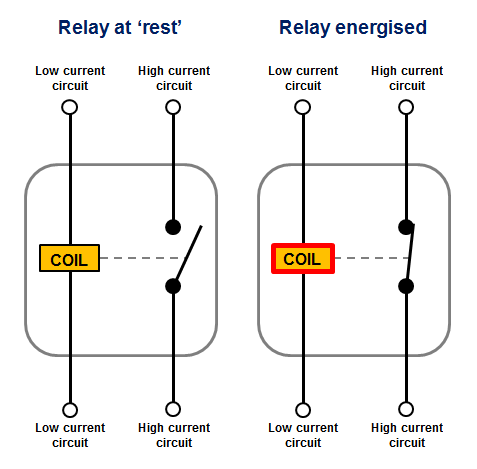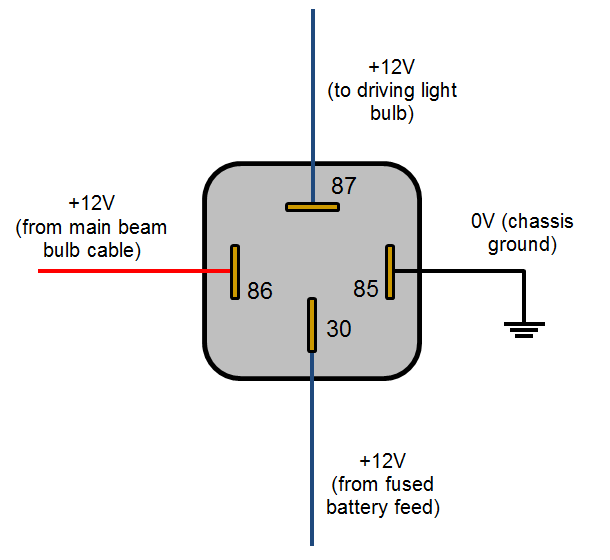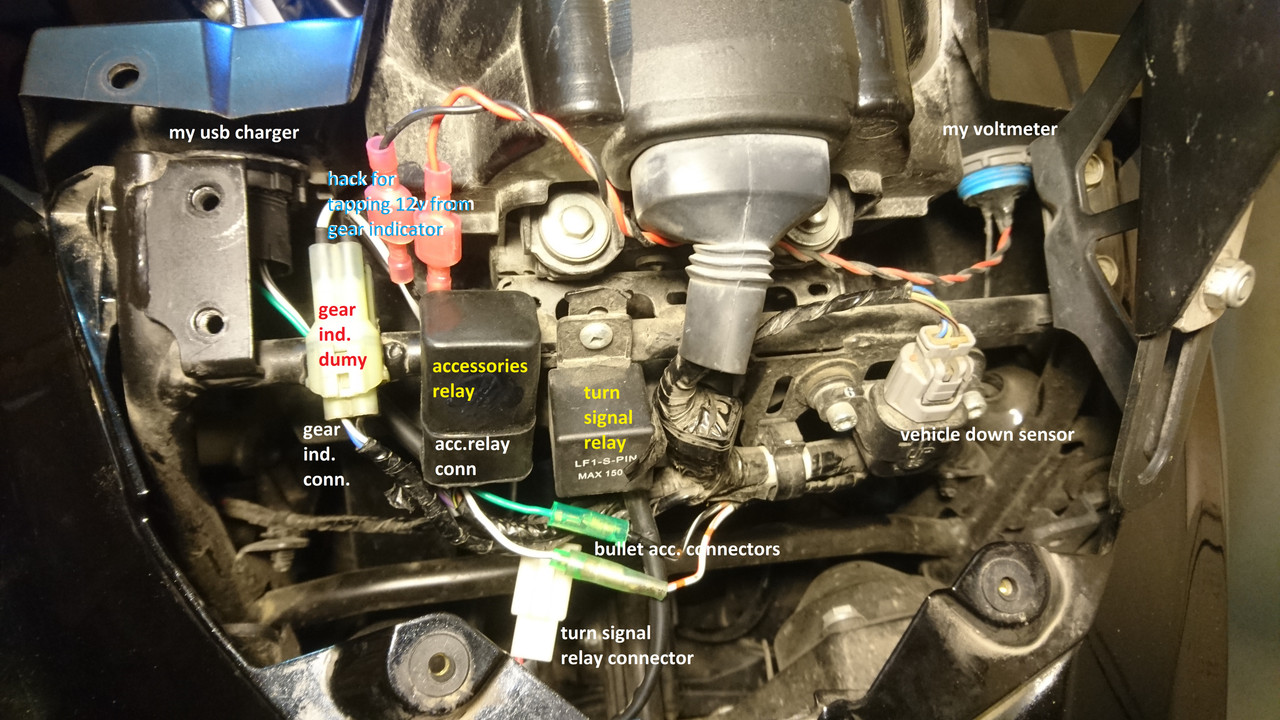Relay Box Internal cct 16-85
OK guess what, we aren't done, 80 PM later>

, well can't fault him for not asking questions. First I am going to mention this is a MK-1 650 KLE-B 2007. The wiring diagram gives the circuitry but the actual wire connections to the center relay
are not all headlight relay specific:surprise:. 16-85 gives the relay box actual wiring, unfortunately you need to be part detective as the pin numbers do not have a colour code, the main drawing has colour but no pin numbers, the actual sockets do not have a reference to either pin or colour.
So below is what I found specific to 16-85
#1 Blue/ Yellow goes to headlight dimmer and low beam / passing switch
#2 Black from the 3 phase output of the stator ( this is the wire that gets cut and taped when installing a Polaris regulator)
#3 Grey from cct.#5 10 amp headlight relay fuse
#6 cct#3 15 amp ECU fuse White / Black to ECU relay contact
#7 Brown / White also to ECU controller
#8 White / Red fuel pump + power
The question was asked why the headlight relay is prone to failure when the other relays seldom fail.
Electrical 101 : I am sure everyone on this forum has been around incandescent lights in their lifetime, have you ever noticed when say a existing light in a room (
already on ) blinks for a fraction of a second when another light is turned on?? The reason for this is inrush current and if you were to measure a 100 watt light bulb ( 120 VAC )with a ohm meter , it would measure roughly 12 ohms. So watts is voltage times current. To find current divide ohms into volts , so 120 / 12 = 10 amp . 10 amp X 120 volts = 1200 watts , yes 10 times the running current, that is why you see the light blink in your house and why the headlight relay contact fails faster than any other relays. LED bulbs do not have inrush current and the higher the voltage the lower the current i.e. when keying on my Denali lights draw more current than when the bike is running and the regulator puts out 14.2 VDC, the reason is most LED lights have a voltage range they function in and have their own regulator built in or a
separate driver







